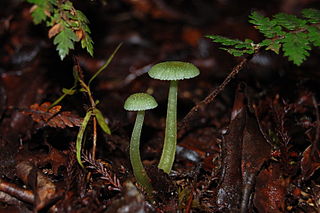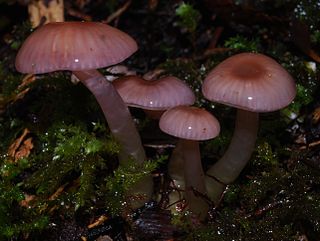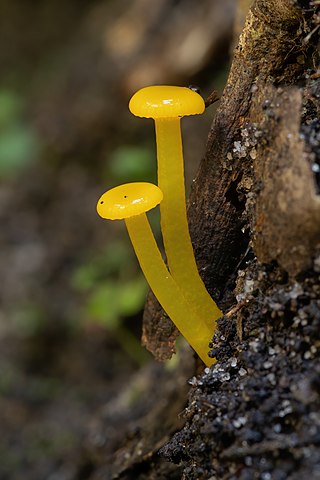
E, or e, is the fifth letter and the second vowel letter of the Latin alphabet, used in the modern English alphabet, the alphabets of other western European languages and others worldwide. Its name in English is e ; plural es, Es or E's.

Q, or q, is the seventeenth letter of the Latin alphabet, used in the modern English alphabet, the alphabets of other western European languages and others worldwide. Its name in English is pronounced, most commonly spelled cue, but also kew, kue and que.

Sony Group Corporation, formerly known as Tokyo Tsushin Kogyo K.K. and Sony Corporation (ソニー株式会社), commonly known as Sony, is a Japanese multinational conglomerate corporation headquartered in Minato, Tokyo, Japan. The Sony Group comprises entities such as Sony Corporation, Sony Semiconductor Solutions, Sony Entertainment, Sony Interactive Entertainment, Sony Financial Group, and others.

In meteorology, precipitation is any product of the condensation of atmospheric water vapor that falls from clouds due to gravitational pull. The main forms of precipitation include drizzle, rain, sleet, snow, ice pellets, graupel and hail. Precipitation occurs when a portion of the atmosphere becomes saturated with water vapor, so that the water condenses and "precipitates" or falls. Thus, fog and mist are not precipitation but colloids, because the water vapor does not condense sufficiently to precipitate. Two processes, possibly acting together, can lead to air becoming saturated: cooling the air or adding water vapor to the air. Precipitation forms as smaller droplets coalesce via collision with other rain drops or ice crystals within a cloud. Short, intense periods of rain in scattered locations are called showers.

Eastern European Time (EET) is one of the names of UTC+02:00 time zone, 2 hours ahead of Coordinated Universal Time. The zone uses daylight saving time, so that it uses UTC+03:00 during the summer.

Gliophorus psittacinus, commonly known as the parrot toadstool or parrot waxcap, is a colourful member of the genus Gliophorus, found across Northern Europe. It was formerly known as Hygrocybe psittacina, but a molecular phylogenetics study found it to belong in the genus Gliophorus. It had already been placed in Gliophorus, but it had been considered a synonym of Hygrocybe.

The kelvin, symbol K, is the base unit of measurement for temperature in the International System of Units (SI). The Kelvin scale is an absolute temperature scale that starts from 0 K, the lowest possible temperature, then rises by exactly 1 K for each 1 °C. The Kelvin scale was designed to be easily converted from the Celsius scale. Any temperature in degrees Celsius can be converted to kelvin by adding 273.15.

Gliophorus is a genus of agaric fungi in the family Hygrophoraceae. Gliophorus species belong to a group known as waxcaps in English, sometimes also waxy caps in North America or waxgills in New Zealand. In Europe, Gliophorus species are typical of waxcap grasslands, a declining habitat due to changing agricultural practices. As a result, two species, Gliophorus europerplexus and Gliophorus reginae, are of global conservation concern and are listed as "vulnerable" on the IUCN Red List of Threatened Species.

Gliophorus irrigatus is a species of agaric in the family Hygrophoraceae. It has been given the recommended English name of slimy waxcap in the UK. The species is widespread in temperate regions, occurring in grassland in Europe and in woodland in North America and elsewhere.

Gliophorus graminicolor is a species of agaric fungus in the family Hygrophoraceae. It is found in Australia and New Zealand. In 1995, Australian mycologists Tom May and Alec Wood transferred the species to Hygrocybe, but the taxonomic authority Index Fungorum retains it in Gliophorus.

Gliophorus versicolor is a species of agaric fungus in the family Hygrophoraceae. Found in New Zealand, it was described as new to science in 1973 by mycologist Egon Horak. Within the genus Gliophorus, it is classified in the section Glutinosae, a grouping of species characterized by having bright colors, decurrent gills, and a gelatinized subhymenium. Fruit bodies have hemispherical to convex caps typically measuring 20 mm (0.8 in), although some have been recorded up to 50 mm (2.0 in). Moist caps are gluey with a color ranging from reddish brown to pinkish-lilac; the cap margin has radial grooves mirroring the gills underneath. The gills have an adnate to somewhat decurrent attachment to the stipe. They are widely spaced with color similar to the cap, or whitish. The cylindrical, hollow stipe measures 2–7 cm (0.8–2.8 in) by 1.5–3 mm (0.06–0.12 in) thick. The fungus is saprobic, and fruits on the ground among Dacrycarpus and Nothofagus.

Gliophorus lilacipes is a species of agaric fungus in the family Hygrophoraceae. Found in New Zealand, it was described by Egon Horak in 1973.
Gliophorus bichromus is a species of agaric fungus in the family Hygrophoraceae. Found in New Zealand, it was described by mycologist Egon Horak in 1973.

Gliophorus europerplexus is a species of agaric in the family Hygrophoraceae. It has been given the recommended English name of butterscotch waxcap. The species has a European distribution, occurring mainly in agriculturally unimproved grassland. Threats to its habitat have resulted in the species being assessed as globally "vulnerable" on the IUCN Red List of Threatened Species.

Gliophorus laetus is a species of agaric fungus in the family Hygrophoraceae. Originally described as new to science by Christian Hendrik Persoon in 1800, it was transferred to the genus Gliophorus in 1958. It is considered edible, but of little interest.
Gliophorus pseudograminicolor is a species of agaric fungus in the family Hygrophoraceae. Found in Australia, it was originally described in 1997 by mycologist Anthony M. Young as a species of Hygrocybe and transferred to Gliophorus in 2013.

Gliophorus reginae is a species of agaric in the family Hygrophoraceae. It has been given the recommended English name of jubilee waxcap. The species has a European distribution, occurring mainly in agriculturally unimproved grassland. Threats to its habitat have resulted in the species being assessed as globally "vulnerable" on the IUCN Red List of Threatened Species.

Gliophorus viridis is a species of agaric fungus in the family Hygrophoraceae found in New Zealand and Australia.

Gliophorus chromolimoneus is a species of agaric fungus in the family Hygrophoraceae found in New Zealand and Australia.

















